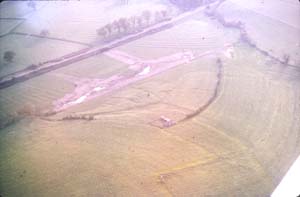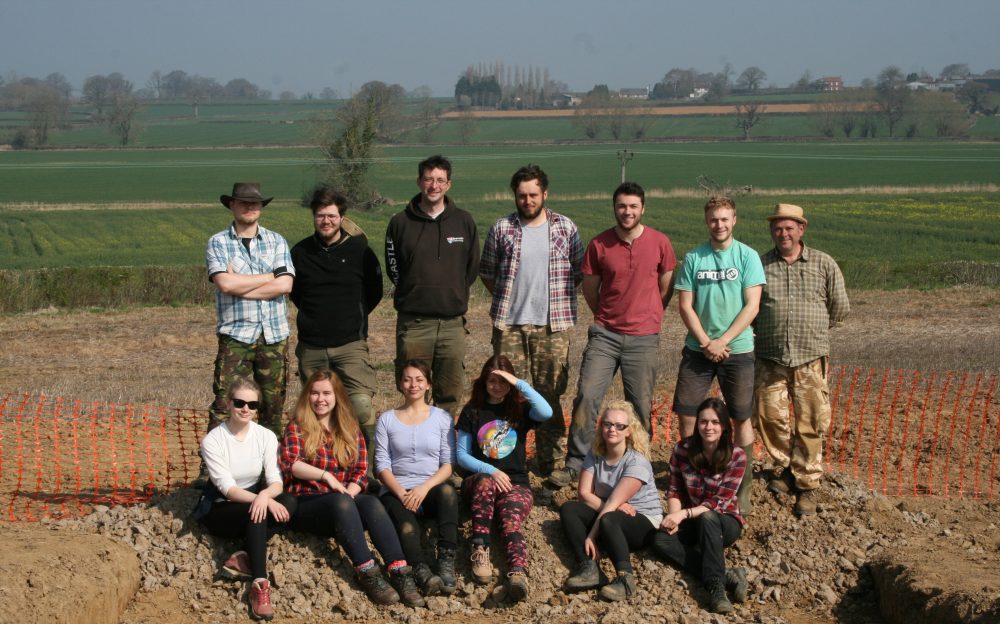Indiana Jones (The Last Crusade) once said:
“X” never, ever, marks the spot. Seventy percent of all archaeology is done in the library
and in many ways Indy was right. We’re most visible when we’re in Somerset digging for three weeks every Summer, but the truth is that excavations are complex projects. Organising a dig is not as simple as flinging some tools and students in a minibus and heading South West!
We’ve been reading up on what is known about the deserted medieval settlement and thought this’d make a good opportunity to share our knowledge.
In 1976 archaeological attention was drawn to a ‘bumpy’ field near Lufton (but actually in Odcombe Parish) that was reputed locally to be the site of an old quarry. Investigation of the site showed it to be the earthworks of a well-preserved Medieval settlement with remains of crofts, holloways, low platforms and boundaries surviving.
A plan of these earthworks was made by the late Mick Aston (county archaeologist at the time).

Plan of the earthworks at Barrow by Mick Aston (from PSANHS 121)
and some aerial photographs were taken that show the site.

Earthworks of the site 1976 (from Somerset HER)
The site was bulldozed shortly after this work was undertaken and some tenth- to fourteenth-century pottery was recovered.
Some further archaeological work was carried out in the early 1990s when the Odcombe-Ilchester waterpipe was laid. This identified a single medieval ditch associated with the settlement and some ridge and furrow.
Documentary records indicate that the site was known as Barrow Orchard in the nineteenth century. In the Lay Subsidy of 1327 a ‘Richardo de Barrow’ is recorded in Odcombe and this might suggest that the settlement was called ‘Barrow’, although we don’t know this for certain.
For further information please take a look at the Somerset HER, or the following papers in Proceedings of the Somerset Archaeological and Natural History Society.
Aston, M. 1977 ‘Barrow(?) deserted medieval village, Odcombe’, Proceedings of the Somerset Archaeological and Natural History Society 121, 115-116
Pearson, T. 1978 ‘Late Saxon and early Medieval pottery from the deseerted village of Barrow(?) in Odcombe’, Proceedings of the Somerset Archaeological and Natural History Society 122, 79-82.
‘





